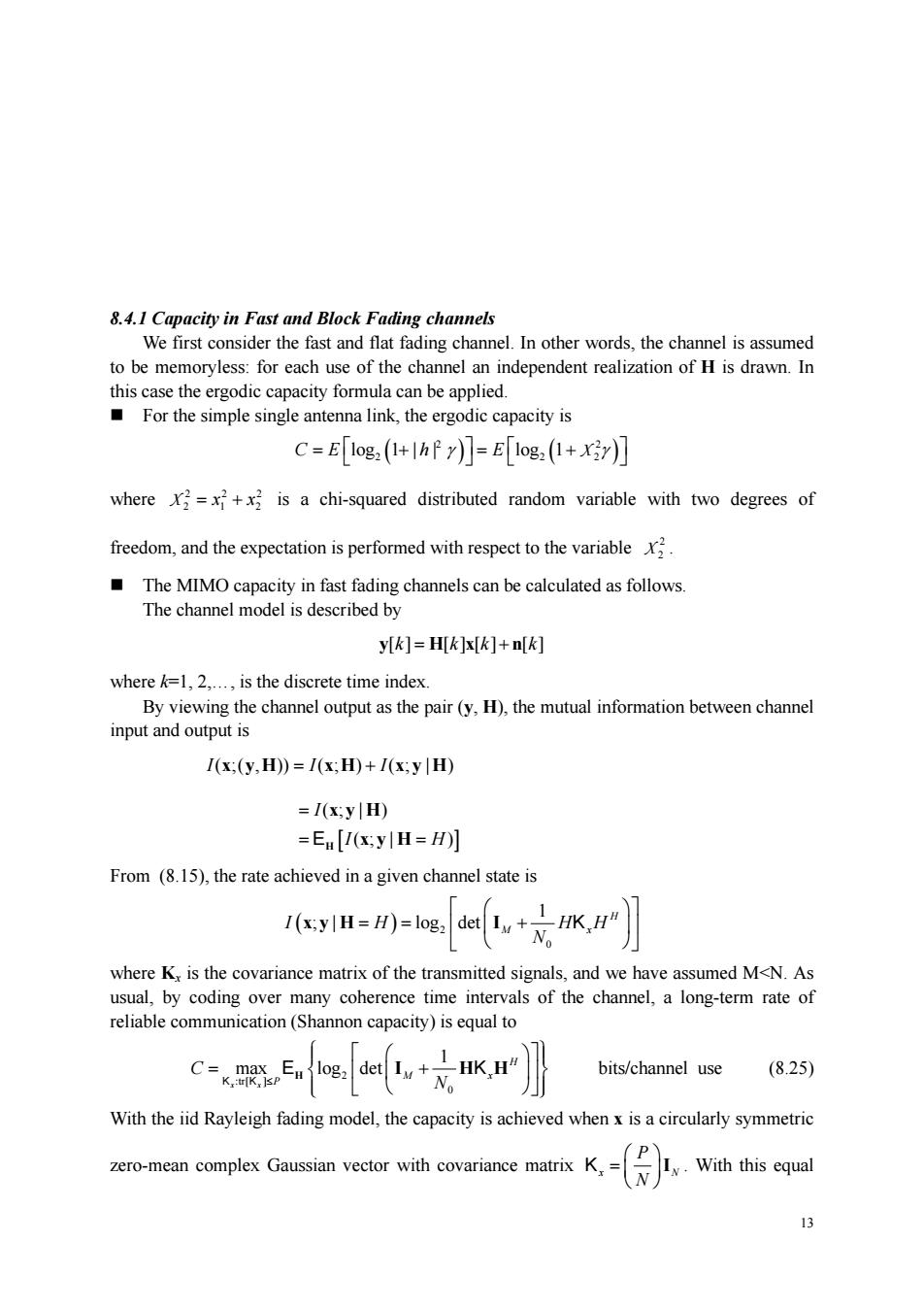正在加载图片...

8.4.1 Capacity in Fast and Block Fading channels We first consider the fast and flat fading channel.In other words,the channel is assumed to be memoryless:for each use of the channel an independent realization of H is drawn.In this case the ergodic capacity formula can be applied. For the simple single antenna link,the ergodic capacity is C=E log:(1+hf)=E log:(1+x3y) where=x is a chi-squared distributed random variable with two degrees of freedom,and the expectation is performed with respect to the variable The MIMO capacity in fast fading channels can be calculated as follows. The channel model is described by y]=]+n[k] where =1,2.is the discrete time index By viewing the channel output as the pair(y.H),the mutual information between channel input and output is /(x;(y,H))=/(x:H)+/(x:y|H) =/(x;y|H) =En [I(x:y=)] From (8.15),the rate achieved in a given channel state is 水n=-sa+k归rj刃 where K,is the covariance matrix of the transmitted signals,and we have assumed M<N.As usual,by coding over many coherence time intervals of the channel,a long-term rate of reliable communication(Shannon capacity)is equal to C=max Enlogz det Iw+HK,H" bits/channel use (825) With the iid Rayleigh fading model,the capacity is achieved whenx is a circularly symmetric mplex Gaussian vector with covariance matrix K.W 13 13 8.4.1 Capacity in Fast and Block Fading channels We first consider the fast and flat fading channel. In other words, the channel is assumed to be memoryless: for each use of the channel an independent realization of H is drawn. In this case the ergodic capacity formula can be applied. For the simple single antenna link, the ergodic capacity is 2 2 2 22 CE h E log 1 | | log 1 X where 2 22 212 X x x is a chi-squared distributed random variable with two degrees of freedom, and the expectation is performed with respect to the variable 2 X 2 . The MIMO capacity in fast fading channels can be calculated as follows. The channel model is described by y[] [][] [] k kk k Hx n where k=1, 2,., is the discrete time index. By viewing the channel output as the pair (y, H), the mutual information between channel input and output is I II ( ;( , )) ( ; ) ( ; | ) x y H xH x y H (; | ) (; | ) I I H H x y H E xy H From (8.15), the rate achieved in a given channel state is 2 0 1 ; | log det H M x I H HH N xy H I K where Kx is the covariance matrix of the transmitted signals, and we have assumed M<N. As usual, by coding over many coherence time intervals of the channel, a long-term rate of reliable communication (Shannon capacity) is equal to 2 :tr[ ] 0 1 max log det x x H M x P C N H I HH K K E K bits/channel use (8.25) With the iid Rayleigh fading model, the capacity is achieved when x is a circularly symmetric zero-mean complex Gaussian vector with covariance matrix x N P N K I . With this equal